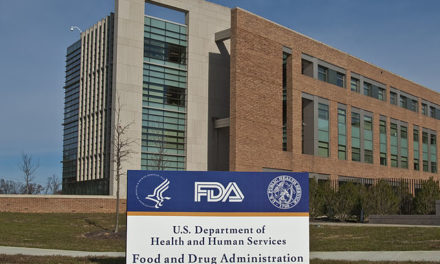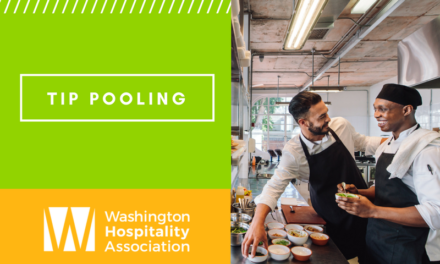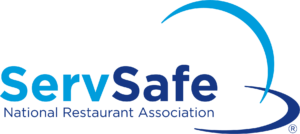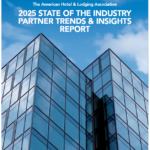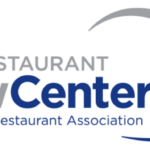By Iain Woessner
Though many businesses remain closed and many people continue to shelter in their homes, the day is fast approaching when we will see businesses and industries opening once more, albeit with restrictions in place. It may be months before the coronavirus is behind us and during this time it is vital that businesses continue to comply with official guidelines.
Michael Octave of Employee Resources Northwest (ERNWest), the largest third-party administrator in Washington state. ERNWest manages retrospective rating programs for businesses throughout the state and helps companies with their worker’s comp.
“As we start rolling out, going back to business, what are some things they should be prepared for or anticipate, from a regulatory standpoint, from an employee standpoint?” Octave said. “But also, if they receive a visit or letter complaining about a COVID-19 situation, what can they anticipate regarding that?”
Octave said that the past month has seen a massive uptick, to the tune of thousands of complaints regarding the coronavirus, sent to the Department of Labor and Industries. That department’s Division of Occupational Safety and Health published the General Coronavirus Prevention Under Stay Home, Stay Healthy Order. This directive provides inspectors enforcement policies and guidance when evaluating workplace safety and health hazards during coronavirus.
To this end, Octave said, there are five major areas where operators are running into issues with staying compliant. Here’s what you should know to keep compliant and handle complaints that come in.
Communication and education: You should always be aware of how you are communicating information and educating your employees on the spread and prevention of coronavirus within your business. Prevention strategy and communications can be integrated into onboarding processes or during a socially distant safety meeting. To this end, the Centers for Disease Control and Prevention have poster boards available that should be placed in common areas. Document discussions and training and have team members verify with signatures that they have undergone specific trainings or educational meetings. This documentation needs to be kept on file.
“What L&I is looking for here from the business community is ‘how are you communicating to and educating your workforce?’” Octave said. “What are your prevention strategies and how are you communicating them to your workforce? As employees come back to work, it is imperative businesses think about how they are communicating that to staff.”
Six-foot social distance rule: Social distancing is already proving a challenge for the restaurant industry, and there is some understanding to the unique challenges present in that world when it comes to doing the job and maintaining social distances.
The current Stay Home, Stay Healthy Order has language that explains that “special circumstances where frequent customer/public interaction may be necessary to some places of employment.” Whenever feasible, businesses establish social distancing with physical systems, ranging from the arrangement of dining areas to the separation of pay stations to the erection of physical barriers to maintain distances from customers and employees.
Official guidance has become available on this subject, and L&I directs that a six-foot minimum separation be maintained between all employees and customers in all interactions, at all times. When strict physical distancing is not feasible for a specific task, other prevention measures are required, such as the use of barriers, the minimization of staff or customers in narrow or enclosed spaces, staggered breaks and work shift starts.
Process of complaints: When there is a complaint, the business will receive a letter in the mail that addresses the specific complaints from the party, employee or customer. Then they will ask the business to post that complaint in a common area for the employees to see. The business must post that letter for at least three days or until the hazard is corrected. The business must report back to the department in writing, describing what corrective actions they’ll take. This can be a written statement or may require documentation, like training records or purchase receipts.
“What we don’t want to do is have L&I in our business, so that’s why we want to try and provide some guidance on ‘what are some of the things to be prepared for’ as we start moving into this new season of COVID-19. We’re trying to make sure people are educated.”
Frequently clean common-touch surfaces: Businesses are required to have a cleaning and sanitation schedule, that includes frequent surface cleaning of commonly-touched areas, like keypads, door handles, tables and so on. Make sure all dishwashing areas have adequate supplies of sanitizer. Bear in mind, supply chain issues may impact the availability of sanitizer. As you plan your restart, you may want to anticipate these delays and take steps to try and ensure you’re not waiting for a long while on supplies.
Workers must have access to handwashing facilities: It is more vital now than ever to have employees understand the importance of proper handwashing. Proper handwashing is critical to protecting employees and customers – this video helps show how hand soap kills the virus.
Be prepared for sick employees: The hospitality industry should be prepared to address sick employees who may come to work sick or become sick while working. Establish a deep cleaning process after any employee leaves the workplace sick. The Centers of Disease Control and Public Health — Seattle & King County, both provide guidelines on how business should address these situations.



